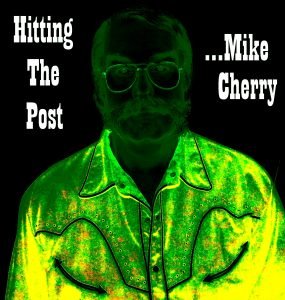
Jim Dalke, o/o of 1460 KARR may not be the only individual running his own AM station from home. In Borass, Sweden, Torleif Roos has received his 2nd temporary, special-events short term AM license from Swedish authorities. That country has a simple two-step process for those wishing to implement such broadcasting. Torleif’s original broadcasts took place in Sept. on 1593 kHz, but this time around has chosen a frequency better suited for night use with low power & a simple antenna. The station is named “Asfalttelegrafen” & will be broadcasting modern rock, including some Nordic groups & artists rarely heard, between Dec. 26 & Jan 8. “Asfalttelegrafen” will be running 330 watts on 1476 kHz. It’s hoped eventually the station may obtain a permanent license as commercial & public broadcasters in many EU nations eliminate AM broadcasting in favor of FM or DAB+ – the infinitely superior & more popular form of “HD” digital transmission than the system used here. Unfortunately, Torleif’s station has no website currently for us to provide you a link.

All throughout Europe & many other countries of the world, AM commercial & public stations are shutting down & moving to FM, DAB+ or both. This is leading to a more successful form of “AM Revitalization” than the inept lip-service given by the FCC to appease struggling AM owners here. In Germany, for example, AM broadcasting has been abandoned for FM & DAB+. Meanwhile, community broadcasters are applying for & launching low powered AM’s to serve small or isolated communities. In the Bavarian mountains where signal reception can get sketchy, a number of new AM stations have come on air recently to provide service to tiny communities. Italy has long had the ability to apply for a simplified license to launch low power AM or FM stations with the provisio that no protection among stations exists & in some instances, AM broadcasters must shut down during hours of darkness to avoid interfering with high powered AM facilities in adjoining countries. In the Netherlands, the government there is now allowing groups & individuals to apply for & receive an “LPAM” license of less than 100 watts of power & all stations have been stuffed onto a handful of frequencies once occupied by the country’s public stations. Broadcasters located close to the country’s borders are restricted to sunrise-sunset operation. The UK’s broadcast regulator – Ofcom – has also created a temporary license structure for special events stations. Broadcasters such as “Radio Caroline” have long used these licenses to provide a temporary station during the many British holidays throughout the year. Also in the UK, there are low power AM stations serving individual hospitals. These provide info, entertainment, messages from friends & well-wishers with mandates to serve patients throughout their wards & provide companionship.

Europe has a much more vibrant & commercially successful broadcasting scene than the US or Canada due to a number of factors. Most significant is the ownership restriction cap preventing broadcasting companies from growing too large or controlling too many stations. This has created a vibrant & competitive commercial broadcasting atmosphere. DAB+ has gained in popularity with listeners unlike the inferior “HD” the US & Canada seem so insistent on promoting. Many EU broadcasters have found efficiencies by eliminating costly AM operation in favor of FM & DAB+. We’ll examine DAB+ & other successful digital broadcasting elsewhere in more depth as we bring you some blogs devoted to HD radio in our country & the Pacific Northwest. Meanwhile, European nations demonstrate a REAL “AM Revitalization” approach. By allowing community groups, individuals & small commercial broadcasters the ability to acquire AM licenses, a newly attractive service is enticing listeners to not abandon AM, as is occurring here. In many countries, there appears to be no shortage of those willing to take a try at successful AM broadcasting by stepping up to the plate to replace more intensive operations.


Some comments may be held for moderation. (New users)